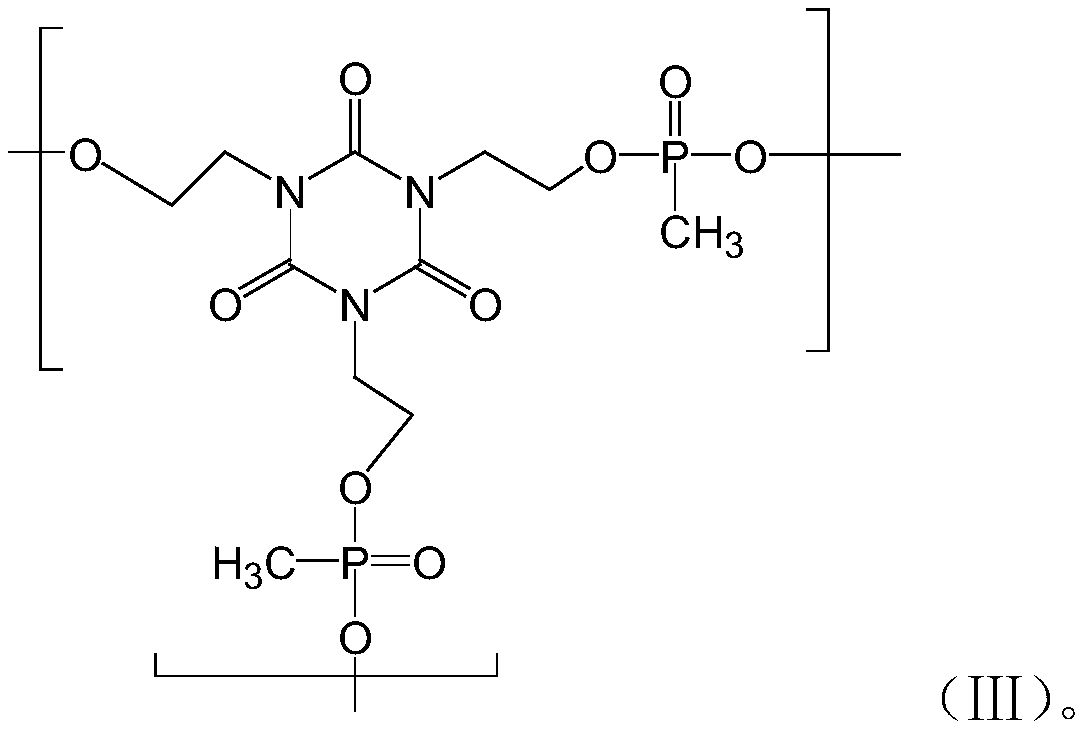A flame-retardant polyurethane leather composition based on dialkyl monothiophosphinate without molten drops and water stains
An alkyl monothiohypophosphite, polyurethane leather technology, applied in polyurea/polyurethane coatings, textiles and papermaking, coatings, etc., can solve the problems of reduction, dripping, easy migration and precipitation, etc.
- Summary
- Abstract
- Description
- Claims
- Application Information
AI Technical Summary
Problems solved by technology
Method used
Image
Examples
preparation example Construction
Preparation of flame retardant components
(1) Preparation of diethyl monothioaluminum hypophosphate
Prepare 960g of 20wt% sodium diethylmonothiohypophosphite aqueous solution and 228g of 30wt% aluminum sulfate aqueous solution, add 1000g of desalinated water to the reactor, and add 50g of 25wt% sulfuric acid aqueous solution, and raise the temperature to 80℃ , Start to add the sodium diethyl monothiohypophosphite aqueous solution and the aluminum sulfate solution synchronously in proportion to the reaction kettle to obtain the precipitate of diethyl monothioaluminum hypophosphite. The dripping is completed in 2 hours, and the temperature is kept for 1 hour. After filtering, washing and drying, 166 g of diethyl aluminum monothiohypophosphite flame retardant (yield 95%) was obtained.
After testing, the initial decomposition temperature of the product is 345°C, and its water solubility is 0.05%.
(2) The preparation process of the carbon-forming component is as follows:
In a 1L ...
Embodiment 1
Example 1
Prepare and characterize polyurethane leather as follows:
(1) Prepare the flame-retardant polyurethane resin composition through the following formula:
Polyurethane resin base material system 84%;
Diethyl monothioaluminum hypophosphate 12%;
Carbon-forming component 4%;
Among them, in parts by weight, the composition of the polyurethane resin substrate system is:
(2) The flame-retardant polyurethane composition is coated on the polyester warp knitted fabric to form a coating with a thickness of 250μm. The coating is dried and cured in a dryer at 120°C for 3 minutes, and pressed with a cloth tie machine at 40°C. After 72 hours of aging, the flame retardant synthetic leather is obtained.
(3) Test related performance.
The materials and their proportions in the examples are shown in Table 1, and the performance test results of the obtained materials are shown in Table 1.
Embodiment 2
Example 2
The implementation process is the same as in Example 1, except for adjusting the ratio of diethyl monothioaluminum hypophosphite and carbon-forming components, the ratio of carbon-forming components is increased, and the total amount of the flame retardant system remains unchanged. See Table 1 for other materials and ratios, and see Table 1 for the results of the materials obtained.
PUM
| Property | Measurement | Unit |
|---|---|---|
| particle size | aaaaa | aaaaa |
| decomposition temperature | aaaaa | aaaaa |
| melting point | aaaaa | aaaaa |
Abstract
Description
Claims
Application Information
 Login to View More
Login to View More - Generate Ideas
- Intellectual Property
- Life Sciences
- Materials
- Tech Scout
- Unparalleled Data Quality
- Higher Quality Content
- 60% Fewer Hallucinations
Browse by: Latest US Patents, China's latest patents, Technical Efficacy Thesaurus, Application Domain, Technology Topic, Popular Technical Reports.
© 2025 PatSnap. All rights reserved.Legal|Privacy policy|Modern Slavery Act Transparency Statement|Sitemap|About US| Contact US: help@patsnap.com



